- Jun 2024
-
accessmedicine.mhmedical.com accessmedicine.mhmedical.com
-
Poison ivy

-
Vohwinkel syndrome

-
Erythema annulare centrifugum
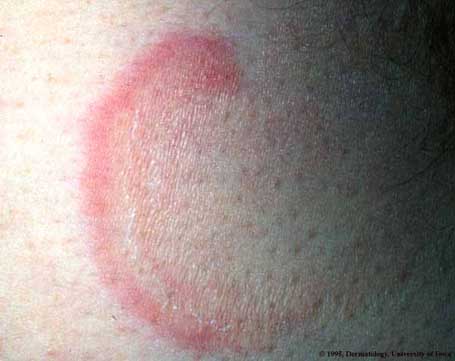
-
Lichen planus
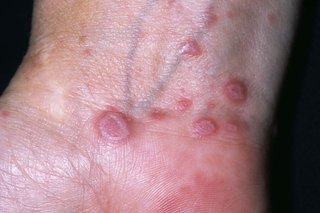
-
Granuloma annulare
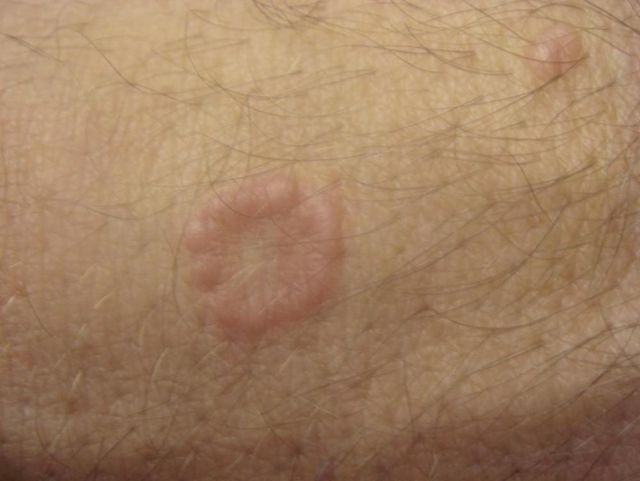
-
Pityriasis rotunda

-
-
accessmedicine.mhmedical.com accessmedicine.mhmedical.com
-
periungual erythema
-
Hutchinson sign

-
onychorrhexis
La onicorrexis son fisuras o roturas longitudinales o transversales de las uñas, llamadas también distrofía media canaliforme de heller.
-
tiger-tail banding
-
trichoschisis
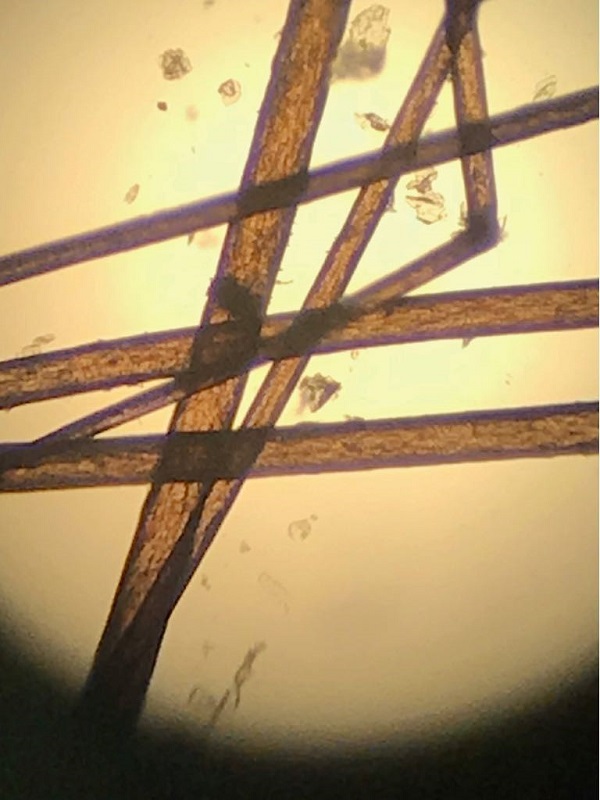 Transverse fractures through the hair shafts (trichoschisis).
Transverse fractures through the hair shafts (trichoschisis). -
trichorrhexis nodosa
richorrhexis nodosa is a common hair problem in which thickened or weak points (nodes) along the hair shaft cause your hair to break off easily
-
Trichothiodystrophy
Trichothiodystrophy (TTD) is a rare autosomal recessive multisystem disorder characterized by sulfur-deficient brittle hair, mental and physical retardation, ichthyosis, and, in many patients, cutaneous photosensitivity but no cancer incidence.
-
Telogen
This is in contrast to telogen effluvium or hair shedding that arises during the telogen or resting stage of the hair cycle.
-
Anagen effluvium
Anagen effluvium refers to hair shedding that arises during the anagen or growth stage of the hair cycle.
-
-
accessmedicine.mhmedical.com accessmedicine.mhmedical.com
-
Cryofibrinogenemia

-
Type 1 cryoglobulinemia

Cryoglobulinemia is a rare medical condition characterized by the presence of abnormal proteins called cryoglobulins in the blood, which precipitate or clump together at low temperatures. These cryoglobulins, composed of immunoglobulins and sometimes complement components, deposit in small- to medium-sized blood vessels throughout the body, causing endothelial injury and end-organ damage. Cryoglobulins can cause a range of symptoms, including joint pain, skin rashes, and kidney problems, due to their tendency to obstruct blood vessels and trigger inflammatory reactions.
-
Blue toe syndrome
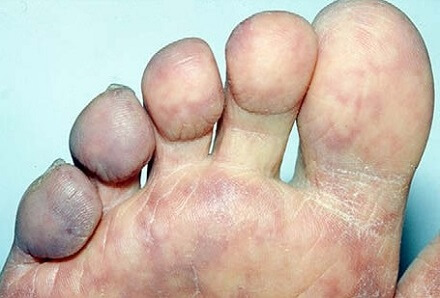
Blue toe syndrome” (BTS) refers to the acute onset of purple painful digits in the absence of evident trauma, cold-associated injury or disorders that induce generalized cyanosis.
-
Lymphocytic vasculitis

-
Janeway lesions
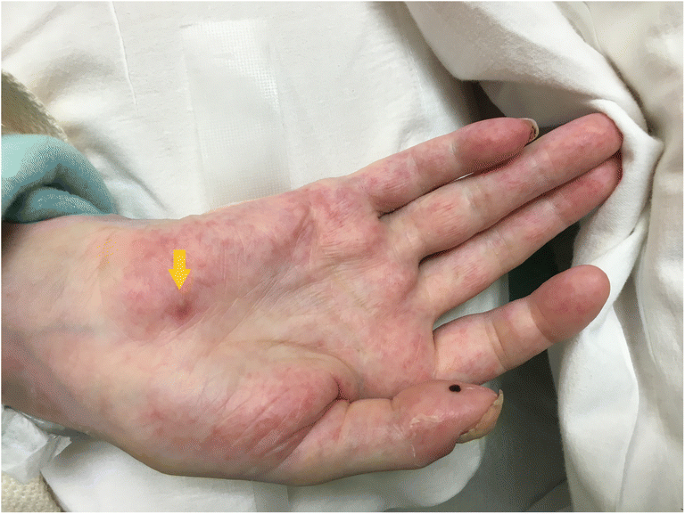
Janeway lesions are rare, non-tender, small erythematous or haemorrhagic macular, papular or nodular lesions on the palms or soles only a few millimeters in diameter that are associated with infective endocarditis and often indistinguishable from Osler's nodes.
-
Leukocytoclastic vasculitis

Leukocytoclastic vasculitis is a cutaneous, small-vessel vasculitis of the dermal capillaries and venules.
-
Acrodynia

Acrodynia is a manifestation of chronic mercury poisoning or idiosyncrasy to mercury. This symptom complex includes dermatological and systemic manifestations of exposure to various forms of mercury
-
Erythromelalgia

Erythromelalgia is a rare clinical syndrome characterized by a triad of redness, warmth, and burning pain, most notably affecting the extremities. It usually affects the lower extremities (most commonly feet) or may involve upper extremities (hands) in few cases. The episodes are typically precipitated by exercise and relieved by cooling the affected parts.
-
Kawasaki disease
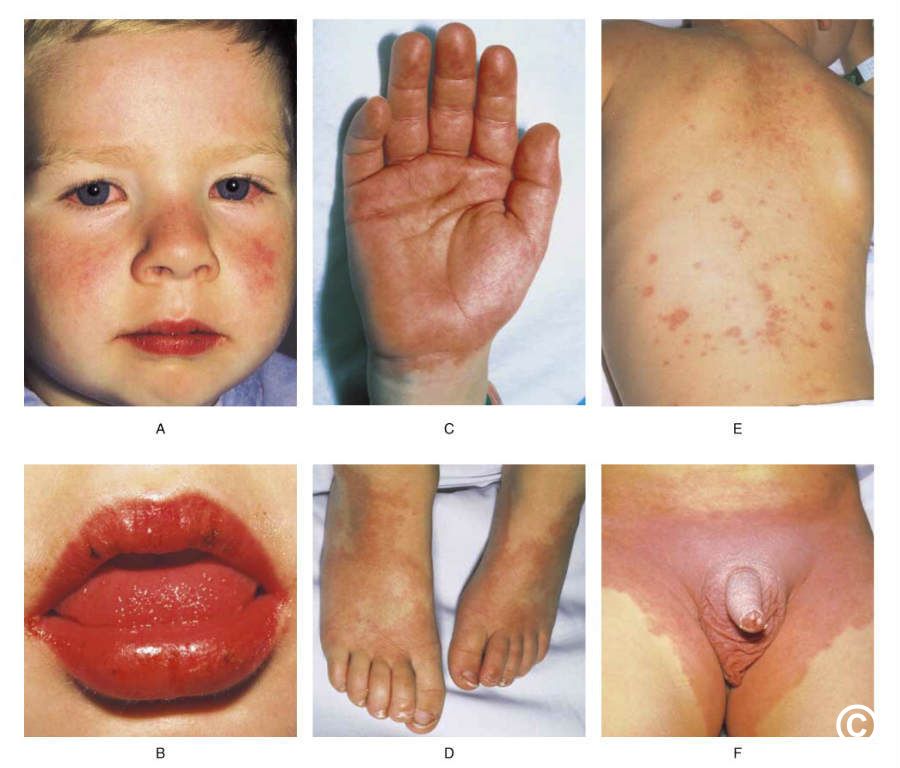
-
Acral erythema from chemotherapy

-
Vitamin B12 deficiency
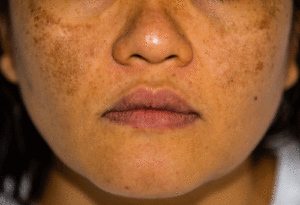
-
Tinea nigra
.webp)
-
SDRIFE

El sdrife es una reacción medicamentosa cutánea intertriginosa y autolimitada, se caracteriza por una erupción eritematosa simétrica que involucra los pliegues intertriginosos, los glúteos y las áreas perigenitales. Representa un trastorno inofensivo y raro que se produce por exposición sistémica a fármacos, independientemente de si hay o no sensibilización previa.
-
Dowling–Degos disease

Dowling-Degos disease is a rare autosomal dominant disorder characterized by acquired reticular hyperpigmentation in flexural sites. Hyperpigmentation is often recalcitrant to therapy and may lead to significant psychosocial distress, especially in those with concomitant acne-like scarring.
-
Erythrasma
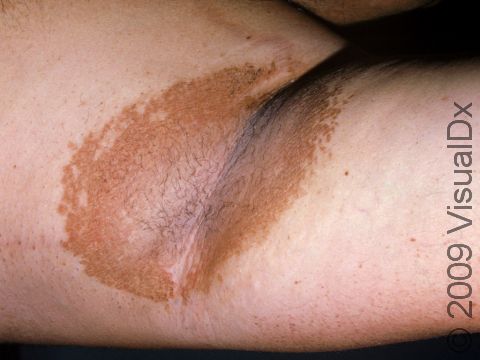
El eritrasma es una infección intertriginosa causada por Corynebacterium minutissimum, muy frecuente en pacientes con diabetes y en individuos que viven en climas más cálidos. El diagnóstico es clínico. El tratamiento se realiza con antibióticos tópicos o con claritromicina por vía oral.
-
Rothmund–Thomson syndrome

(ROT-moond-TOM-sun SIN-drome) A rare, inherited disorder that affects many parts of the body, especially the skin, eyes, bones, hair, and teeth. The main sign or symptom is a red blistering rash on the face that begins in early infancy.
-
Trichothiodystrophy

Trichothiodystrophy (TTD) is a rare autosomal recessive multisystem disorder characterized by sulfur-deficient brittle hair, mental and physical retardation, ichthyosis, and, in many patients, cutaneous photosensitivity but no cancer incidence.
-
Cockayne syndrome
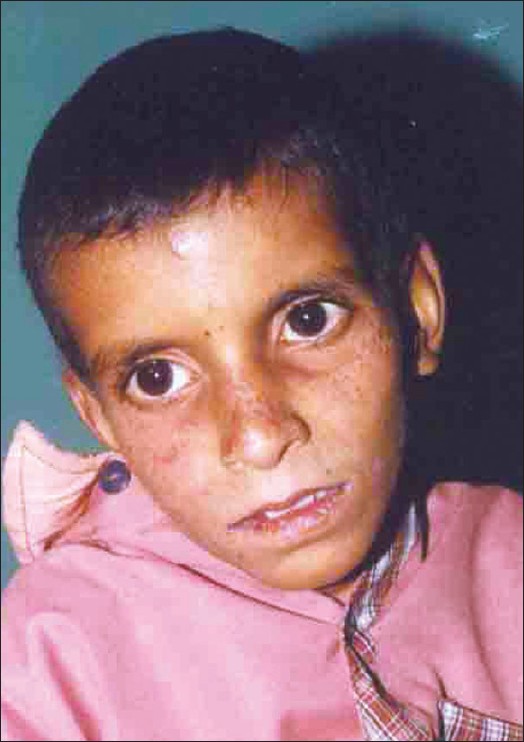
-
Xeroderma pigmentosum

-
-
accessmedicine.mhmedical.com accessmedicine.mhmedical.com
-
Erythema infectiosum
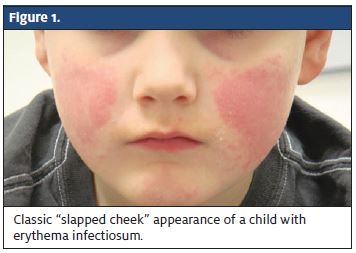
El eritema infeccioso, también conocido como megaloeritema o 5.º enfermedad, es una enfermedad infecciosa producida por el virus de DNA Parvovirus B19,2 de la familia Parvoviridae.
-
Bloom syndrome

Bloom syndrome (BSyn) is a rare genetic disorder characterized by short stature; a sun-sensitive, red rash that occurs primarily over the nose and cheeks; mild immune deficiency with increased susceptibility to infections; insulin resistance that resembles type 2 diabetes; and most importantly, a markedly increased susceptibility to many types of cancer, especially leukemia, lymphoma and colorectal tumors.
-
Erythema ab igne

por calor o radiación uv
-
-
accessmedicine.mhmedical.com accessmedicine.mhmedical.com
-
nevus anemicus
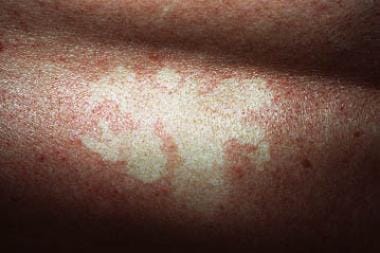
-
congenital dermal melanocytosis
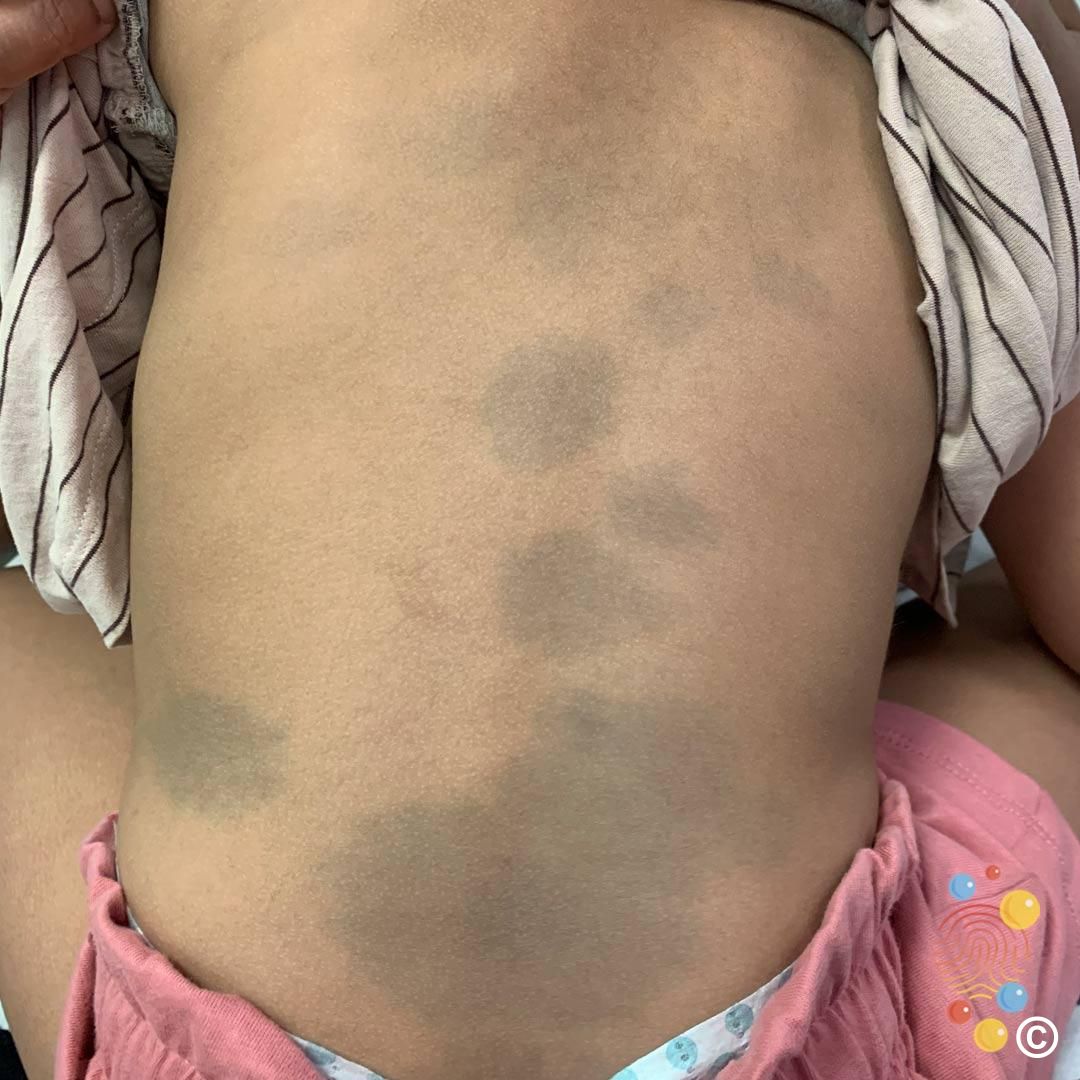
-
Nevus of Ota
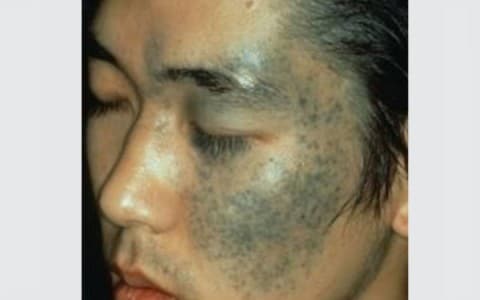
-
tumor of Reed
 The pigmented spindle cell tumor is a distinct benign melanocytic lesion with characteristic clinical and histopathologic features. Until recently, it has been poorly documented in the literature and is frequently misdiagnosed as malignant melanoma
The pigmented spindle cell tumor is a distinct benign melanocytic lesion with characteristic clinical and histopathologic features. Until recently, it has been poorly documented in the literature and is frequently misdiagnosed as malignant melanoma -
Urticaria pigmentosa

-
junctional nevi
The junctional melanocytic nevus is a well-circumscribed brown to black macule, which may clinically resemble a lentigo. It may develop anywhere on the body surface. Usually it appears during childhood or early adolescence, and matures with time into a compound nevus and later into an intradermal nevus.
-
lentigines
Lentigines, or liver spots, are benign lesions that occur on the sun-exposed areas of the body. The backs of hands and face are common areas.
-
Patch-stage Kaposi sarcoma

-
resolving lichen planus

-
Interface dermatitis
Interface dermatitis includes diseases in which the primary pathology involves the dermo-epidermal junction. Lupus erythematosus, dermatomyositis, lichen planus, graft versus host disease, erythema multiforme, fixed drug eruptions, lichen striatus, and pityriasis lichenoides are considered major interface diseases
-
-
accessmedicine.mhmedical.com accessmedicine.mhmedical.com
-
incontinentia pigmenti

-
Becker nevus

-
dermatomyositis
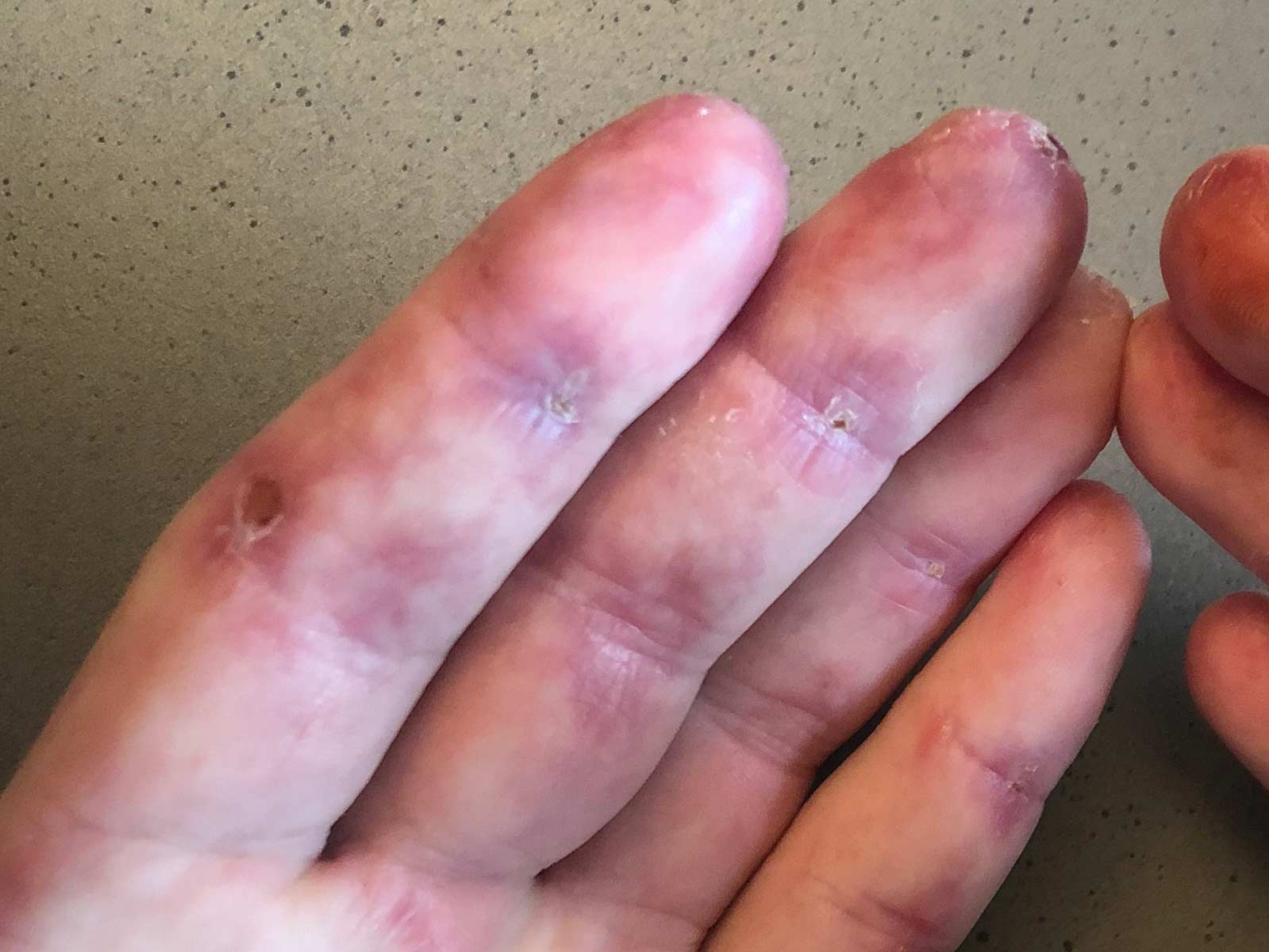
-
Vibices

-
Flagellate erythema
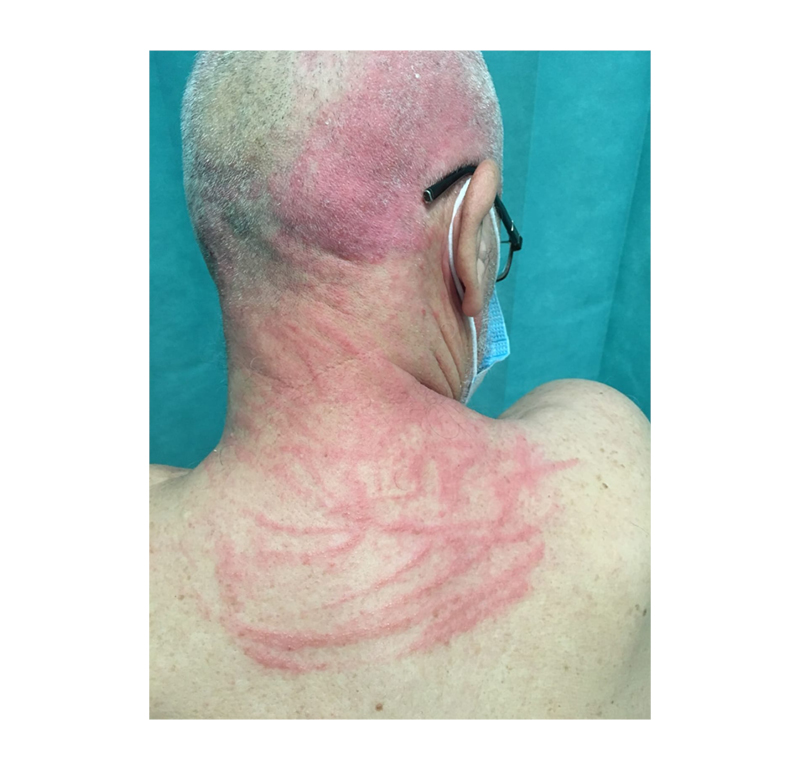
-
Hypomelanosis of Ito

-
dermatitis artefacta
La dermatitis artefacta (DA) es un diagnóstico excepcional, que genera perplejidad y ansiedad al dermatólogo al encontrase ante una patología autoprovocada y de la que el paciente sabe más que el médico en cuanto a su etiología. Al contrario que otras dermatosis en las que existen pruebas histológicas o bioquímicas, en la DA el diagnóstico es de exclusión, lo que exige un gran consumo de recursos y de tiemp
-
McCune–Albright syndrome
-
• Arsenic exposure

-
epidermodysplasia verruciform

-
Pinta
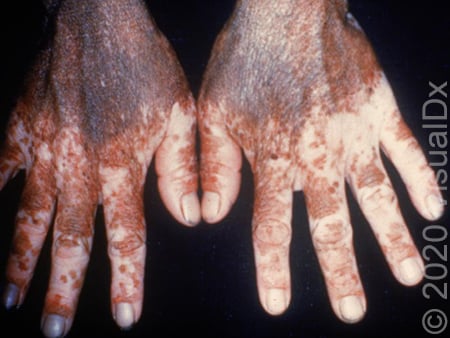
-
keratosis punctata

-
Darier disease

-
tuberous sclerosis

-
guttate
-
-
accessmedicine.mhmedical.com accessmedicine.mhmedical.com
-
Targetoid erythemas
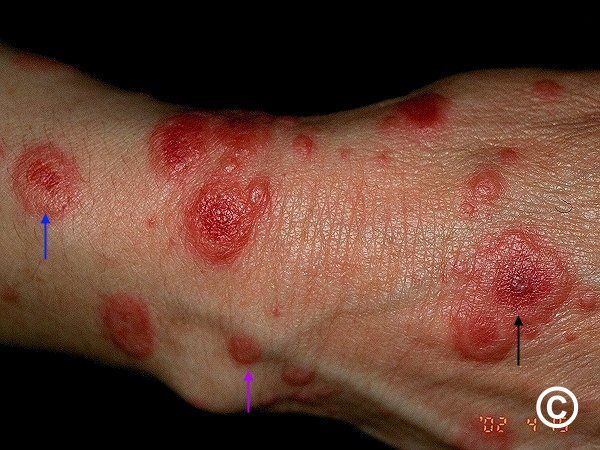
-
Urticarial erythemas

-
erythema annulare centrifugum

-
Figurate erythemas
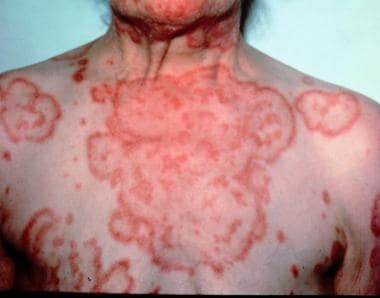
-